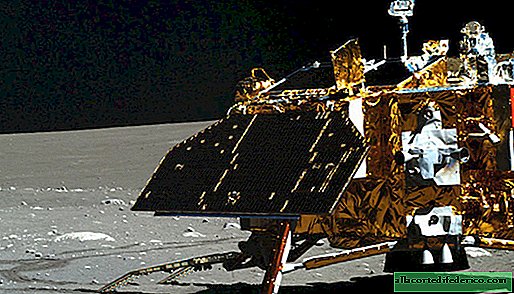The Chinese are ahead of everyone: the new lunar rover successfully exploring our satellite from the back
At the beginning of the year, a significant event in the field of lunar cosmonautics took place: on January 3, the Chinese apparatus Chang'e-4 made a successful landing on the invisible earthlings of the moon. The automatic station was launched using the Changzheng-3V booster rocket from the Xichang cosmodrome on December 8 last year. And in January, Chang'e-4 made the first ever landing on the back of our satellite.

Soft landing took place in Karman crater, which in turn is located in an even larger crater - South Pole-Aitken Basin. The Yutu-2 all-terrain vehicle separated from the landing station, which will study the surface of the moon. Since this part of the satellite is always hidden from the Earth, a special relay satellite called Queqiao, which has been in orbit since May 2018, will be used to transmit data. In addition to Chinese developments, the program involves apparatus and tools manufactured jointly or fully provided by other countries, in particular Sweden, Germany and the Netherlands.

Yutu-2 will be powered by solar panels, and it is planned that the lunar rover will study our satellite for 3 months, after which it will cease to transmit signals. In addition to the standard program for studying the surface of the moon and the bowels of the satellite, it is planned to carry out a number of interesting experiments. For example, with this mission, seeds of food crops and silkworm eggs were delivered to the moon. All this is placed in special containers that contain everything necessary for germination and further development of plants. During the experiments, it is planned to find out whether the seeds can germinate, as well as what will happen to insects in the conditions of lunar gravity. In addition, it is convenient to conduct radio astronomy observations from the far side of the Moon, since there are no radio interference from the Earth interfering with such cases.

















